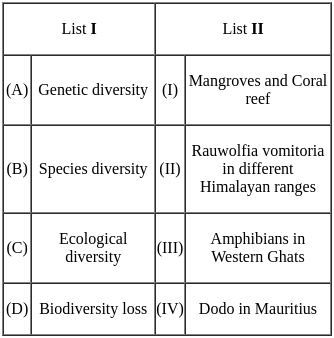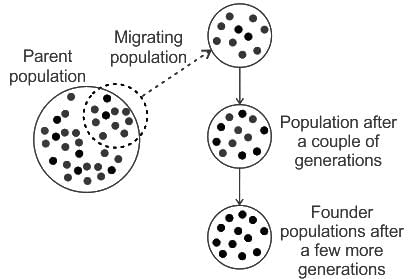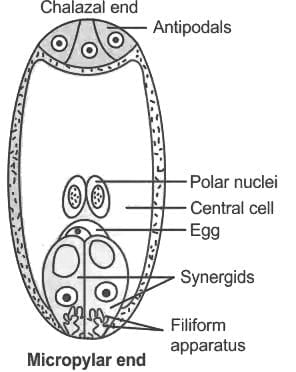Biology: CUET Mock Test - 8 - CUET MCQ
30 Questions MCQ Test CUET UG Mock Test Series 2026 - Biology: CUET Mock Test - 8
An antibody is represented by which of the following formula?
Identify the statements which are not true for the natural ecosystem.
(A) Grassland and desert are examples of terrestrial ecosystem.
(B) Oceans and rivers are man-made ecosystems.
(C) Wetland and estuary are examples of aquatic ecosystem.
(D) Crop fields and aquarium are natural ecosystems.
Choose the correct answer from the options given below:
Match List I with List II.

Choose the correct answer from the options given below:

The factor that leads to founder effect in a population is :
With regard to insulin choose the correct options.
(a) C-peptide is not present in mature insulin.
(b) The insulin produced by rDNA technology has C-peptide.
(c) The pro-insulin has C-peptide
(d) A-peptide and B-peptide of insulin are interconnected by disulfide bridges.
Choose the correct answer from the options given below
Which is the most common type of embryo sac in angiosperms?
Which of the following statements are correct?
(A) In exponential growth, the population grows at a constant rate.
(B) The logistic growth model is more realistic for most populations because it includes resource limitations.
(C) Amensalism is an interaction where one species benefits and the other is harmed.
(D) Resources always limit population growth in nature.
(E) In the case of resource partitioning, two species can coexist by using resources differently.
Choose the correct answer from the options given below:
Which of the following statements are correct?
(A) An ecosystem includes both biotic and abiotic components.
(B) Primary productivity refers to the production of organic material by consumers.
(C) The energy flow in an ecosystem is unidirectional.
(D) Decomposers help in converting complex organic matter into simple inorganic substances.
(E) The pyramid of energy is always inverted in all ecosystems.
Choose the correct answer from the options given below:
What is the role of Saccharomyces cerevisiae in alcohol production?
What significant impact did the discovery of antibiotics have on human health?
What is the primary function of bioprocess engineering in biotechnology?
What was one of the earliest applications of biotechnology?
What technique in biotechnology allows for the manipulation of genetic material?
Which of the following is an example of a product made using biotechnology?
What is one of the core techniques in modern biotechnology?
Which of the following set of antibodies are responsible for providing Natural Passive Immunity to the foetus?
Which of the following is not the function of an antibody?
Which of the following statements is not correct regarding IgM antibody?
Which structure of the antibody is represented by the following figure?

Treponema pallidum is responsible for causing which of the following STDs?
Which of the following is a venereal disease, caused by a virus and can get transmitted by blood contact also?
The most common site of infection in females suffering from chlamydiasis is _______
Which of the following is not a Sexually Transmitted Disease?
|
39 docs|145 tests
|


















